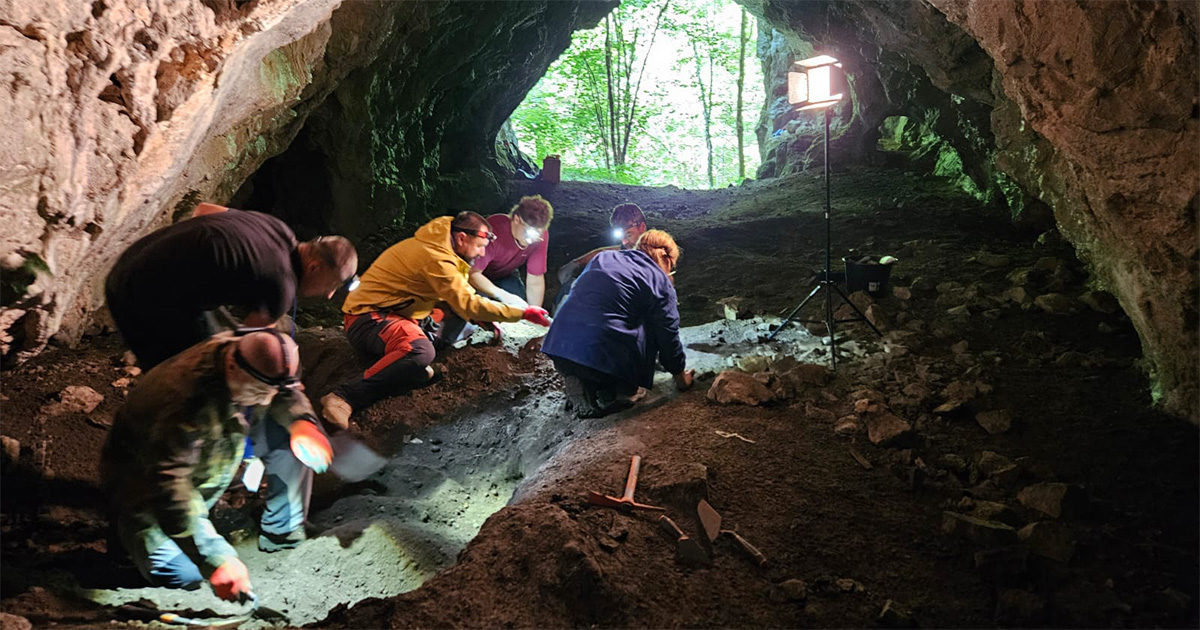The Vârghiş Gorge is one of the most important archaeological and paleoanthropological research sites in Romania. A team led by researchers Marian Cosac and George Muratoreanu, from Valahia University of Târgoviște, has been working in the region since 2014 and has already unearthed numerous traces of prehistoric occupation in the valley’s caves, including dozens of stone tools from the so-called Mousterian industry — typically produced by Neanderthals — found alongside the bones of bears, lions, woolly rhinoceroses, and other extinct species from the Middle Paleolithic. The group’s excavations are concentrated in Peștera Mare, the largest cave in Vârghiş.
To date, however, no skeletal remains of these Neanderthal populations have been found in Romania — only stone tools and other archaeological artifacts left behind. Filling this gap is the ultimate challenge of the expedition. “It’s like looking for a needle in a haystack; but if you don’t look, you’ll never find it,” says researcher Walter Neves, senior professor and coordinator of the Research and Outreach Center for Human Evolution at the Institute of Advanced Studies (IEA) at USP, who leads the project.
Neves explains that the idea of searching for hominins in Romania came from a conversation with professor Stefan Vasile of the University of Bucharest, whom he met in 2019 while teaching a course in Dmanisi, in the Republic of Georgia — one of the world’s most important archaeological sites for the study of human evolution. “I had never considered establishing an archaeological mission in Romania, but then I started studying the history of the place and realized it was a hotspot for Neanderthal and sapiens interaction,” Neves recalled in an interview with Jornal da USP. “So I thought: hey, this is interesting!”
Contact with Vasile led to an invitation from Cosac and Muratoreanu for the Brazilian research group to join the Romanian team in excavations at the Vârghiş Gorge. In April 2024, a first joint reconnaissance mission of the valley’s caves was carried out. Four months later, the group conducted its first excavation in a cave called Tătarului (also known as Tătarilor), which had been selected during the previous trip.
